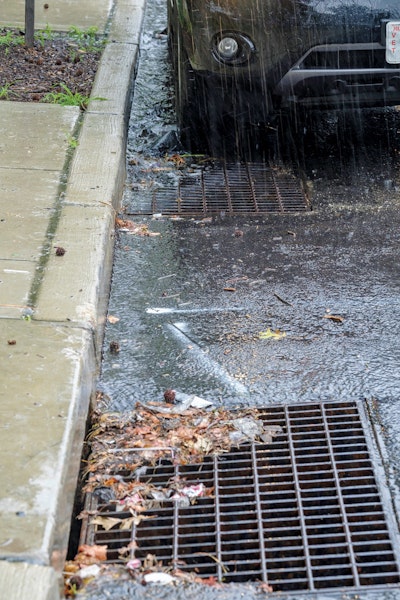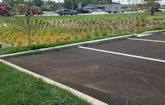Interested in Stormwater?
Get Stormwater articles, news and videos right in your inbox! Sign up now.
Stormwater + Get AlertsClimate change is a pressing issue for local governments. Sea level rise and the unpredictable nature of storm events have put a strain on already aging stormwater infrastructure, requiring huge investments to address the problem.
Paying for these investments should not rely upon methods of the past. Addressing the problems climate change has caused requires a new approach to stormwater funding. Using data like trip generation rates to develop a hybrid model of assessing fees is an innovative and equitable solution that benefits communities.
Stormwater fees
Typically, stormwater fees are part of your monthly utility bill or yearly property tax assessments and are determined by impervious area — the footprint of your property that cannot absorb water. In these areas, the natural infiltration of stormwater into the ground is blocked, which results in higher stormwater runoff that must be managed by the municipal stormwater system. A larger structure or more pavement on a property usually leads to a higher fee. While that may seem like a fair method of calculating fees, every city is different. Vertical development and high population densities have challenged the usual model of fee collection, exposing proportional benefit gaps among property types and usage.
In Fort Lauderdale, Florida, for example, stormwater issues have primarily affected roadways, forcing the city to focus its efforts on keeping roads clear and passable while enhancing the quality of storm-water though street sweeping. What’s more, its fee structure did not accurately reflect benefits to residents of usable streets from stormwater infrastructure. This meant much of the cost burden fell on a smaller fraction of the city’s residents, while the benefits are accrued more broadly. Working with city officials, our team found that a hybrid model using a trip-generation rate component for stormwater fees would better reflect the estimate of a given plot’s roadway use, creating a more equitable system.
Trip generation
The Institute of Transportation Engineers creates trip generation rates from extensive survey data. Simply put, they estimate the average number of daily trips a parcel generates. A single-family home averages about nine trips per day, while a gas station averages 845 trips per thousand square feet of store. Commercial properties generate trips due to the high economic activity that takes place on the land. This, in turn, leads to a greater benefit from clear and passable roads than a similar-size plot that generates fewer trips. Additionally, trip generation rates are measured in one of two units: either the building square footage or the number of trip demand units (dwelling units).
Those two measurements consider a parcel’s whole development, including the vertical built environment. This change is a significant contrast to traditional measurements that only considered impervious area, which is basically a 2D variable.
For example, the impervious area of two plots can be identical, but one is a single-story building with 15 residential units and the other is a multi-story building with 300 residential units. Looking only at the measured impervious area, one could conclude that the two plots benefit the same from stormwater services, but that isn’t necessarily true. The plot with more residential units generates more trips and receives more benefit in total than the plot with a lower use of the roadway network — the primary place where stormwater activities occur.
When you consider the steps that the city takes to address stormwater issues to maintain a free and passable roadway, it is evident the parcels benefit far differently. By expanding our thinking to consider how the roadway network is being used, we can create a fee schedule that better reflects the benefits of stormwater activities and provides a more fair and equitable plan.
Community engagement
Perhaps the most critical element to applying an innovative fee structure is community support. People are naturally resistant to change, especially when it involves increased costs.
Engagement is essential for helping residents understand that they are part of a larger community. Helping the residents grasp how their community’s systems are linked can reduce the resistance to fee increases that support quality of life services.
In Fort Lauderdale, our team participated in nine public meetings. Part of our strategy was to find community champions that could convince their neighbors the changes were needed. Since the fee increase affected high-rise residences and commercial properties more, we scheduled special meetings to discuss the increased benefits of stormwater management to them.
Unique solutions
A cookie-cutter approach to stormwater funding will not work for most communities. Each has its own unique traits and needs. Thus, solutions must address local challenges. While trip generation rates made sense for Fort Lauderdale, they may not work for another city. For example, in the city of Venice on the opposite coast of Florida, red tide events and algae blooms can cause infrastructure issues. In that case, our team suggested a water quality element to the city’s fees meant to help reduce the impact of stormwater pollution on local waterways. The water quality of the discharge can be measured and fees assessed accordingly to provide a unique equitable solution for this community.
There are many other combinations of solutions available to produce a fair and equitable fee structure. By working with stakeholders to understand the community’s problems, we can align the solutions available to make sure the fee reflects the area needs.









